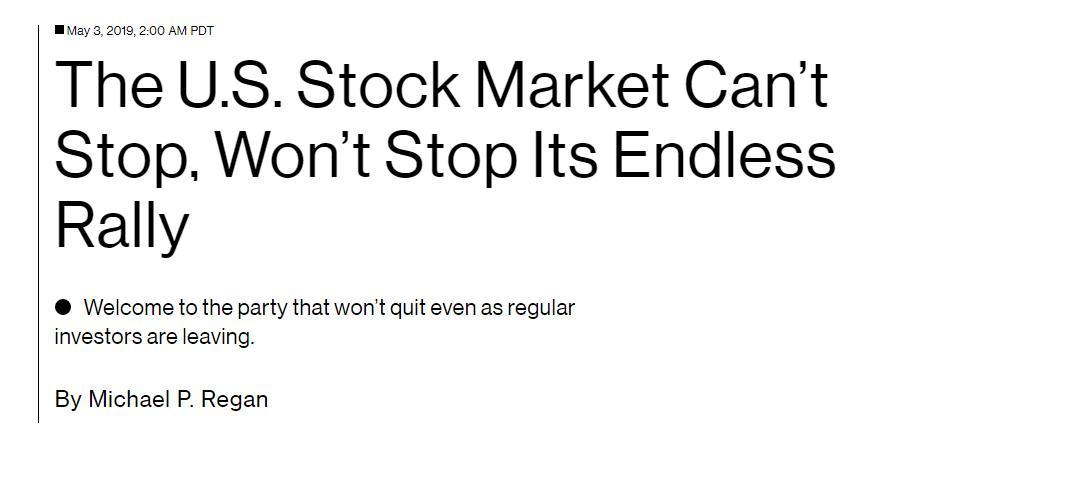Bloomberg’s Michael Regan has taken a lot of heat for his Friday article “The U.S. Stock Market Can’t Stop, Won’t Stop Its Endless Rally“, which prompted some to ask if Bloomberg, with its “millennialized”, click-optimized newsroom, has become the new Barron’s.
And yet, Regan’s less than prescient headline notwithstanding, he made an accurate point in his teaser, namely that “regular investors are leaving.“
That, as we have pounded the table week after week after week, has been the real story of 2019 – not the relentless, artificial melt-up in the market on the back of a dovish reversal by central banks and the daily US-China trade talk “optimism” which we now know is not happening.
Confirming that this trend continued for one more week, even as the S&P hit new all time highs, Bank of America’s strategist Jill Carey Hall writes that last week, during which the S&P 500 was up +0.2%, virtually everyone sold stocks, as “Institutional clients, hedge funds and private clients sold the highs in equities last week.” And yet, somehow the S&P hit a new all time high. How? The answer: “Corporate buybacks ramped up.”
As BofA elaborates, “buying was led by corporate buybacks, as all other groups (hedge funds, institutional and retail clients) were net sellers of equities for the second consecutive week.” This means that for one more week, traditional investors were – as Regan noted above – boycotting stocks, and were delighted to sell stock back to the companies that were once again aggressively buying back their own stock with the S&P hitting all time highs, to wit:
- Clients were net sellers of single stocks (2nd straight week), but continued to buy ETFs (8th straight week). Cumulative flows into ETFs YTD turned positive, reversing outflows seen earlier this year (Chart 1).
- Buybacks last week were their highest since early Feb: they tend to be strong during earnings seasons and seasonally peak in mid/late May. Buybacks YTD are +20% YoY, though the growth rate continues to decline.
But if everyone else was selling, how did buybacks offset the selling avalanche? Simple: according to BofA’s stock repurchase desk, “buybacks last week were their highest since early Feb: they tend to be strong during earnings seasons and seasonally peak in mid/late May. Buybacks YTD are +20% YoY, though the growth rate continues to decline.”
While this means that we can once and for all forget about the recurring lie of a buyback blackout period – which as we explained before applies only to a very narrow subset of stock repurchases – it also means that we have reached a level of market lethargy where stock buybacks are powerful enough to offset all other selling. .
via ZeroHedge News http://bit.ly/2JphQLo Tyler Durden


